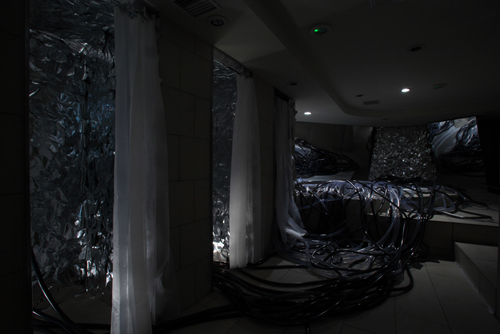Black gesture
text by Keishin Nakaseko
from exhibition text of "Art Line Kashiwa 2011 : Water flow bottom of the Night"
2011

|
Black gesture from exhibition text of "Art Line Kashiwa 2011 : Water flow bottom of the Night"
|
I remember the "black painting" that I saw at Art Front Gallery the other day. I believe I am good at being emotional when I look at paintings, although I had have never thought that I would become nervous. It is evident that a sense of touch, trace and material would appear if the artist used her fingers to plaster the paint. However, when I realized that Kabata's technique was not a style of drawing but a type of painting by feeling with the fingers and hands, it is not decent to say, but I was startled.
To me, as the son of a public bath owner in Kishu, the relation between the reflections of crooked images in the mirror and black puddles reminds me of a steamed up bathroom and the muddy tub with a man and woman's dirt. I am thrilled to see what will appear. Kabata's theme of searching for the whereabouts of visibility amid the chaotic scenery of Japan overlap. She could be that unidentified someone who prevents us from straining our sight, straightening the crooked and sharpening the diffuse, helping us see the future in front of us, in the heavy air of "never ending daily lives".
|